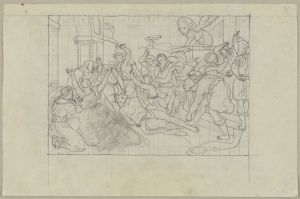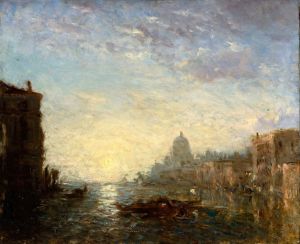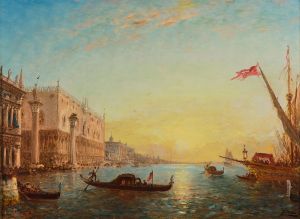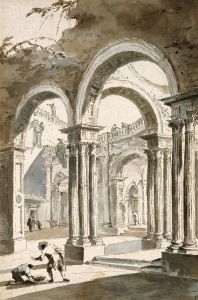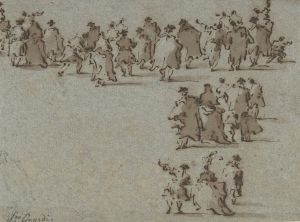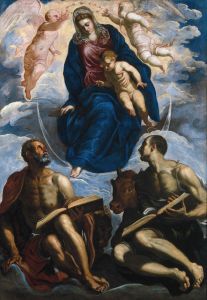
Le miracle de l’esclave, copie d’après Tintoret ou Le martyre de Saint-Marc
A hand-painted replica of Félix Ziem’s masterpiece Le miracle de l’esclave, copie d’après Tintoret ou Le martyre de Saint-Marc, meticulously crafted by professional artists to capture the true essence of the original. Each piece is created with museum-quality canvas and rare mineral pigments, carefully painted by experienced artists with delicate brushstrokes and rich, layered colors to perfectly recreate the texture of the original artwork. Unlike machine-printed reproductions, this hand-painted version brings the painting to life, infused with the artist’s emotions and skill in every stroke. Whether for personal collection or home decoration, it instantly elevates the artistic atmosphere of any space.
Félix Ziem, a French painter known for his vibrant landscapes and cityscapes, created "Le miracle de l’esclave, copie d’après Tintoret ou Le martyre de Saint-Marc," which translates to "The Miracle of the Slave, after Tintoretto or The Martyrdom of Saint Mark." This work is a copy or interpretation of a painting originally by the renowned Italian Renaissance artist Jacopo Tintoretto. Tintoretto's original painting, "The Miracle of the Slave," was completed in 1548 and is housed in the Gallerie dell'Accademia in Venice, Italy. It is celebrated for its dynamic composition and dramatic use of light and shadow, characteristic of Tintoretto's style.
Félix Ziem was born on February 26, 1821, in Beaune, France, and became associated with the Barbizon School, a group of painters who were part of the Realist movement in art. Ziem is particularly noted for his depictions of Venice, a city that captivated him and became a recurring subject in his work. His fascination with Venice's architecture and the interplay of light on water is evident in many of his paintings.
In creating "Le miracle de l’esclave," Ziem was engaging in a common practice of the time: copying or reinterpreting masterworks from earlier periods. This practice allowed artists to study and pay homage to the techniques and compositions of their predecessors. Tintoretto's "The Miracle of the Slave" depicts a scene from the life of Saint Mark, the patron saint of Venice. In the painting, Saint Mark intervenes to save a slave from torture, showcasing a miraculous event that underscores themes of divine intervention and justice.
Ziem's version of the painting would have required a deep understanding of Tintoretto's original work, as well as the ability to capture its essence while potentially infusing it with his own artistic sensibilities. While Ziem is primarily known for his landscapes, his engagement with a historical and religious subject such as this demonstrates his versatility and respect for the art of the past.
The practice of copying masterworks was not only a form of homage but also an educational exercise for artists. By replicating the works of great masters, artists like Ziem could explore different techniques and compositional strategies, thereby enriching their own artistic repertoire. This process also allowed them to bring these historical and often geographically distant works to new audiences who might not have the opportunity to see the originals.
Félix Ziem's contribution to art is significant, as he managed to bridge the gap between the Romantic and Impressionist movements, with his works often characterized by their vibrant color palettes and lively brushwork. His interpretation of Tintoretto's work would have been an opportunity to explore the dramatic narrative and emotional intensity that the original painting conveyed.
Overall, "Le miracle de l’esclave, copie d’après Tintoret ou Le martyre de Saint-Marc" by Félix Ziem stands as a testament to the enduring influence of Renaissance art on later generations of artists and highlights the continued relevance of historical themes in the evolving landscape of art history.





